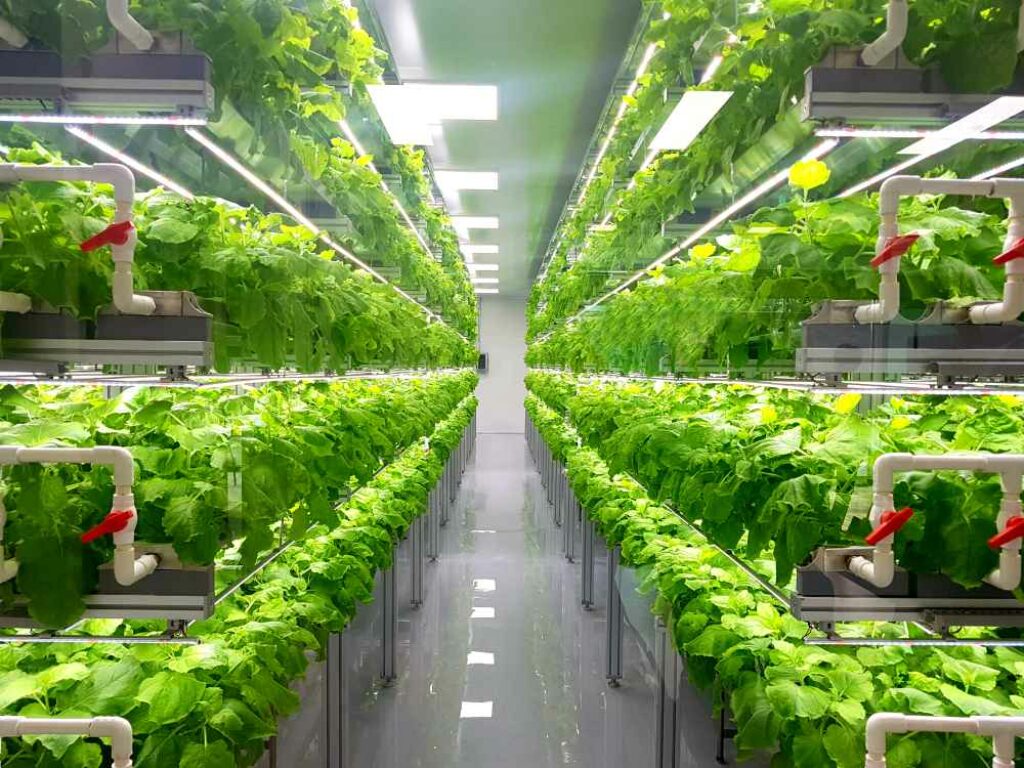
Hydroponics
Hydroponics is a modern method of growing plants without soil, using nutrient-rich water solutions to provide the essential elements for plant growth. This innovative approach has gained popularity in recent years due to its efficiency and ability to produce high yields in limited spaces.
Related Topics (Sponsored Ads):
This article will explore the concept of hydroponics, its benefits and disadvantages, its suitability for various environments, the supplies needed for hydroponic gardening, and practical tips for successful engagement. With the knowledge and understanding of hydroponic gardening as discussed below, individuals can embrace this innovative method of plant cultivation, contributing to sustainable agriculture and food security in diverse settings.

Benefits and Advantages of Hydroponics
One of the primary benefits of hydroponics is its ability to conserve water. Unlike traditional soil-based gardening, hydroponic systems use water more efficiently as it is recirculated within the system, reducing the overall water consumption. Additionally, hydroponic systems can be set up indoors, allowing year-round cultivation regardless of the climate or season. This indoor setting also protects plants from pests and diseases, resulting in healthier produce.
Furthermore, hydroponic gardening enables faster plant growth and higher yields compared to traditional soil-based methods. The controlled environment and direct access to nutrients allow plants to thrive and reach maturity at an accelerated rate. This efficiency is particularly advantageous for commercial growers who seek to maximize their production within limited space.
Disadvantages
While hydroponics offer numerous benefits, there are also some disadvantages to consider. The initial setup cost of a hydroponic system can be higher than traditional gardening methods. The investment in equipment, such as grow lights, pumps, and nutrient solutions, may deter some individuals from adopting this method. Additionally, the reliance on technology and the need for consistent monitoring and maintenance can be intimidating for beginners.
Another potential disadvantage is the susceptibility of hydroponic systems to power outages. Without a backup power source, plants may suffer from a lack of essential nutrients and lighting, impacting their growth and overall health. It is essential for hydroponic growers to have contingency plans in place to mitigate the risks associated with power disruptions.
Suitability for Different Environments
Hydroponic systems are versatile and can be adapted to various environments, making them suitable for urban settings, arid regions, and locations with limited access to fertile soil. In urban areas, where space is limited, vertical hydroponic systems are popular as they maximize growing space by utilizing vertical structures such as walls or shelves. In arid regions with poor soil quality, hydroponics offer a viable alternative to traditional agriculture, allowing for the cultivation of crops without the need for fertile soil.
Moreover, hydroponic systems can thrive in controlled indoor environments, making them suitable for regions with extreme climates or limited sunlight. This adaptability enables individuals and communities to engage in year-round farming, promoting food security and self-sufficiency.
Supplies Needed for Hydroponic Gardening
To engage in hydroponic gardening, several essential supplies are required to create and maintain a successful system. Firstly, a growing medium such as perlite, coconut coir, or rockwool is necessary to support the plants’ roots and provide stability. Additionally, a nutrient solution containing essential minerals and nutrients tailored to the specific needs of the plants is vital for their growth and development.
In addition, proper lighting is crucial for indoor hydroponic systems, as natural sunlight may be insufficient. LED grow lights are commonly used to provide the necessary spectrum of light for photosynthesis. A reliable water pump and reservoir are essential for circulating the nutrient solution throughout the system, ensuring that plants receive an adequate supply of nutrients. Lastly, pH and EC meters are essential for monitoring the acidity and nutrient levels in the water, allowing growers to make adjustments as needed.
Practical Tips
To ensure the success of a hydroponic garden, it is essential to maintain a clean and well-maintained system. Regular monitoring of nutrient levels, pH balance, and water circulation is crucial to prevent nutrient deficiencies and imbalances. Additionally, proper ventilation and air circulation within indoor hydroponic environments are essential to prevent mold and mildew growth.
When selecting plants for hydroponic cultivation, it is important to choose varieties that are well-suited for this method of gardening. Leafy greens, herbs, tomatoes, and strawberries are popular choices for hydroponic cultivation due to their adaptability to soilless environments and high demand in the market.
Furthermore, beginners should start with a simple hydroponic system to gain practical experience before expanding to more complex setups. Learning the fundamentals of nutrient management, plant care, and system maintenance is essential for long-term success. Engaging in community forums, workshops, and seeking advice from experienced hydroponic growers can provide valuable insights and guidance for those new to this gardening method.
Conclusion
Hydroponics represents a revolutionary approach to modern gardening, offering numerous benefits such as water conservation, faster plant growth, and adaptability to various environments. While there are initial costs and potential disadvantages to consider, the long-term advantages of hydroponic gardening make it a compelling option for individuals and communities seeking sustainable and efficient methods of food production.
By understanding the essentials supplies needed and following practical tips for success, aspiring hydroponic growers can undertake a successful endeavor of soilless cultivation, reaping the rewards of fresh, nutritious produce throughout the year.




